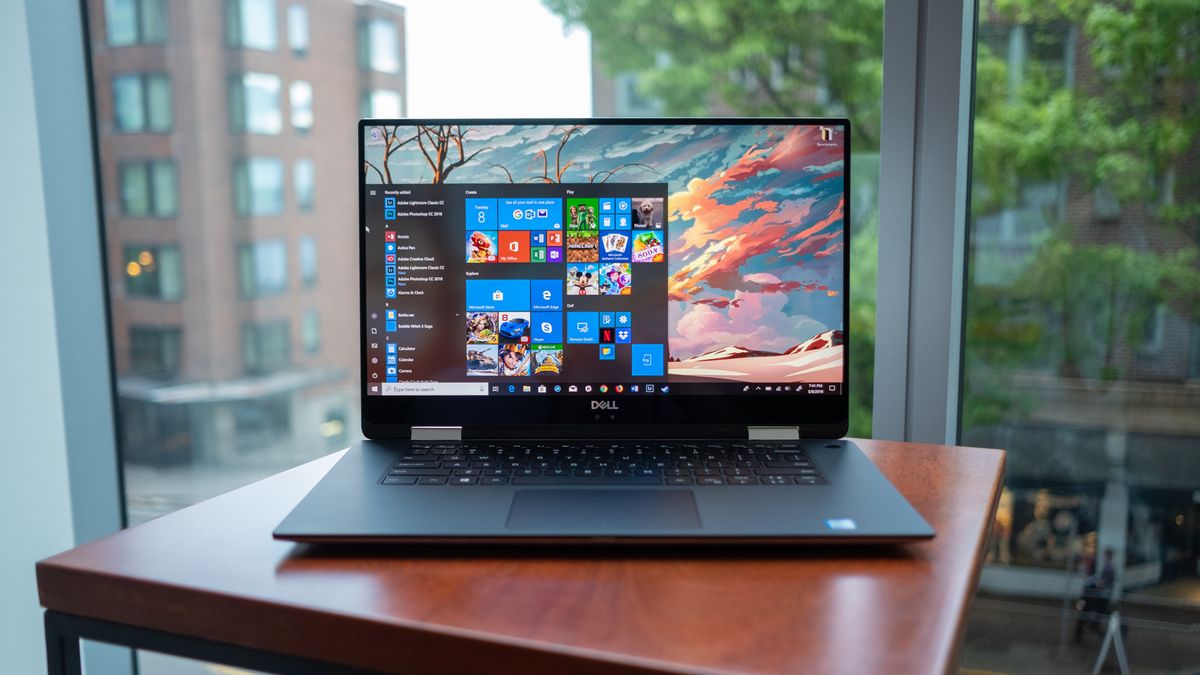TechRadar Verdict
The Dell XPS 15 2-in-1 sets a new bar for hybrid laptops, packing impressive gaming power into an ultra-thin shell. If it weren’t for the loud fans and software that still needs work, this notebook would have been a home run hit.
Pros
- +
Impressive processing and graphical power on a single chip
- +
Surprisingly tactile maglev keyboard
- +
Ultra-thin design for a gaming-capable laptop
Cons
- -
Radeon settings software needs a fix
- -
Runs very loud during a heavy load
- -
Little expensive
Why you can trust TechRadar
Dell has been on a tear with its redesigns in 2018. On top of a daring overhaul on its flagship Ultrabook, the Dell XPS 13, the Round Rock-based company has completely reinvented the Dell XPS 15 into a 2-in-1 laptop.
In converting a powerhouse laptop into a hybrid machine you actually want to use as a tablet, Dell turned to Intel’s new Kaby Lake G processors to deliver ‘discrete-level’ graphics on a single chip. This 15-inch performance machine also introduces Dell’s new magnetically driven keyboard and innovative cooling system to further reduce weight and compress the size of this convertible notebook.
- Buying Guide: 15 best laptops for most people in 2019
- Buying Guide: 10 best 2-in-1 laptops in the world today
Considering we already quite liked the previous XPS 15 model, giving it a 360-degree hinge and an 8th-generation Intel Core processor with AMD Vega graphics built-in has only sweetened the deal. If only this laptop could defy physics to run a little cooler and quieter, it would have earned a perfect score.
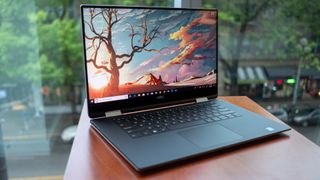
Here is the Dell XPS 15 2-in-1 (2018) configuration sent to techradar for review:
CPU: 3.1GHz Intel Core i7-8705G Processor (quad-core, 8MB cache, up to 4.1 GHz)
Graphics: Radeon RX Vega M GL graphics, Intel HD Graphics 630
RAM: 16GB DDR4 (2,400MHz)
Screen: 15.6-inch, 4K Ultra HD (3840 x 2160) InfinityEdge anti-reflective touch display
Storage: 512GB PCIe SSD
Ports: 2 x Thunderbolt 3 (USB-C), 2 x USB-C 3.1, microSD card reader, headset jack
Connectivity: Killer 1435 802.11ac 2x2 Wi-Fi Bluetooth
Camera: 720p Widescreen HD webcam with 4 array digital microphones, Windows Hello compliant infrared camera
Weight: 4.36 pounds (2kg)
Size: 13.9 x 9.2 x 0.36-0.63 inches (35.4 x 23.5 x 0.9-0.6cm; W x D x H)
Price and availability
Dell begins selling the XPS 15 2-in-1 for $1,299 (about £957, AU$1,653). At this price you will 15.6-inch Full HD touch display, 8th-gen Intel Core i5-8305G processor with Radeon RX Vega M GL graphics, 8GB of DDR4 memory and a 128GB solid-state drive (SSD). In Australia, the XPS 15 2-in-1 SKUs start at AU$3,399 with an Intel Core i7-8705G, 8GB of RAM and 512GB SSD.
The only other laptop currently equipped with the same Kaby Lake G chips is the HP Spectre x360 15 that starts at a higher $1,369 (about £1,010, AU$1,740) to start. That said, HP’s Kaby Lake G-powered hybrid comes stock with a 4K display.
In order to get a 4K screen on the XPS 15 2-in-1, you’ll need to spend at least $2,099 and upgrade to a configuration starring the Intel Core i7-8705G processor with the same Radeon RX Vega M GL graphics, 8GB of RAM and 256GB of storage. In the UK and Australia, you’ll have to jump right up the configuration of our $2,349 (£2,199, AU$3,899) review unit for an Ultra-HD screen.
Comparatively, the Samsung Notebook 9 Pro when fully loaded for $1,299 (about £960, AU$1,720) comes equipped with a 7th generation Intel Core i7-7500U processor paired with AMD Radeon RX 540 graphics, FHD display, 8GB of memory and an 128GB SSD. The king of hybrids, the Lenovo Yoga 920, can comparably equipped with an 8th generation Intel Core i7-8550U, 4K display, 16GB of RAM and 512GB SSD for $1,799 or AU$2,649 (about £1,510).








Design
The XPS 15 2-in-1 has seen a similar hybrid redesign to the one that the smaller XPS 13 2-in-1 introduced at CES 2017, beyond its obviously larger dimensions. Dell seems to have found a design that works and is sticking to it.
You get the same silver-colored anodized aluminum lid and base with the carbon fiber keyboard rest that has released on prior XPS 15 models, this time with aluminum hinges that allow for 360 degrees of rotation. The only thing that’s truly unique to this laptop’s exterior is the rear vent that looks a bit like a reverse air scoop you would see on a car. This is where the laptop expels a lot of its heat – but we’ll get more into that later.
Dell’s most impressive revisions went into slimming down the powerhouse XPS 15 into a hybrid laptop that’s comfortable to hold. In fact, Dell claims this machine to be the smallest and thinnest 15.6-inch 2-in-1 laptop available today at just 0.35-0.63 inches (0.9-1.6cm) thin and 13.9 inches (35.4cm) wide. The laptop also weighs 4.3 pounds (1.97kg) to start, with higher-end options likely to add a few ounces.
Comparatively the Dell XPS 15 measures in at a larger 14.06 x 9.27 x 0.45-0.66 in (35.7 x 23.5 x 1.1-1.7cm), but is surprisingly 0.3 pounds lighter than its hybridized version. Still, to us, the XPS 15 2-in-1 doesn’t feel much heftier than a 15-inch MacBook Pro – impressive for a 15-inch laptop with a touchscreen.
Given this laptop’s size and lightness, we’re surprised by the selection of ports Dell has managed to make available within the XPS 15 2-in-1: two Thunderbolt 3 and two USB-C 3.1 – all of which support charging and DisplayPort – a microSD card reader and a headset jack. It’s sad to see the old USB-A and full-size SD Card reader bite the bullet, but perhaps Dell held off long enough.
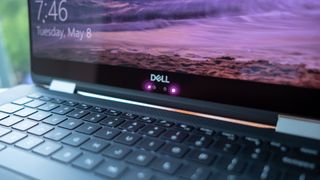
Shrinking science
What has made this incredibly diminutive size possible is two-fold.
First is Dell’s use of its next-generation InfinityEdge display with a new 1,500:1 contrast ratio that makes blacks all but disappear on the screen. This nearly bezel-less display frame allows a laptop that’s just 13.9 inches wide to house a screen that’s 15.6 inches wide diagonally.
Beneath said screen is a 720p webcam paired with an infrared lens for secure Windows Hello login – and it’s centered just like the new XPS 13. Although the webcam placement gives your friends and family a a up-your-nose point of view during video chats, the Windows Hello functionality works surprisingly quick. Plus, there’s also a fingerprint reader built right into the power button, for yet another Windows Hello login option.
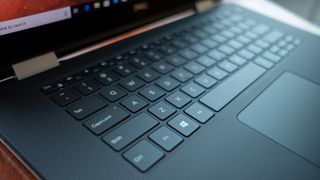
Second is a brand-new keyboard maglev technology that allows the base to be thinner than what was possible before. This maglev keyboard tech is similar to that of the bullet trains in Japan, but obviously applied at a much, much smaller scale. By employing rare-earth magnets beneath the keys, rather than domed membraned switches like most laptops, this laptop mimics the feel of a physical key response with only 0.7mm of travel.
After typing on the keyboard for just a few moments, that shorter travel is apparent: it’s definitely not a 1:1 simulation of standard laptop keyboard behavior. To make up for the lack of travel, the keys are more rigid, requiring a firmer press, but also reset more quickly. Overall, we feel like we move between keys as quickly as we’re used to on a taller keyboard.
At first it takes a little getting used to, especially with how the island keys just barely rise above the rest of the carbon fiber laden keyboard deck. Also, having page up and down keys right next to the arrow keys is just the worst. But, once you get the hang of it, it’s an impressive innovation that’s allowed for a mightily thin and light device with a comparably large screen.
Thankfully the glass-coated, Microsoft Precision touchpad remains unchanged and is as delightful to use as ever.
Joe Osborne is the Senior Technology Editor at Insider Inc. His role is to leads the technology coverage team for the Business Insider Shopping team, facilitating expert reviews, comprehensive buying guides, snap deals news and more. Previously, Joe was TechRadar's US computing editor, leading reviews of everything from gaming PCs to internal components and accessories. In his spare time, Joe is a renowned Dungeons and Dragons dungeon master – and arguably the nicest man in tech.
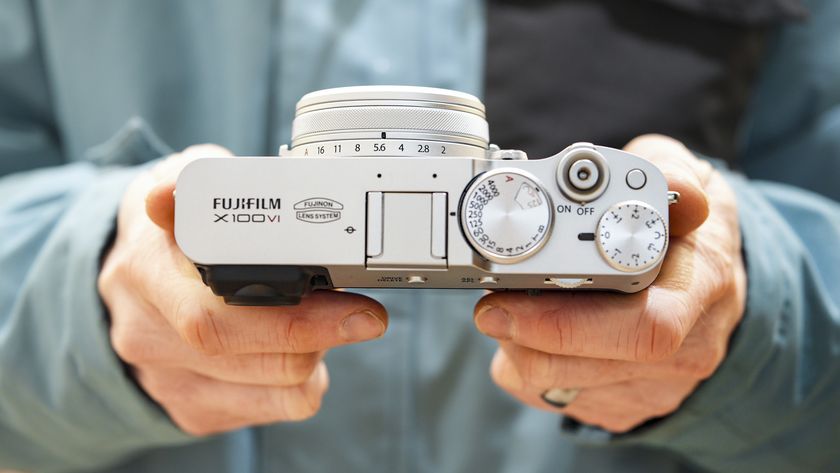
I review all the best camera phones, but I think Samsung and Apple should just copy the Fujifilm X100VI already
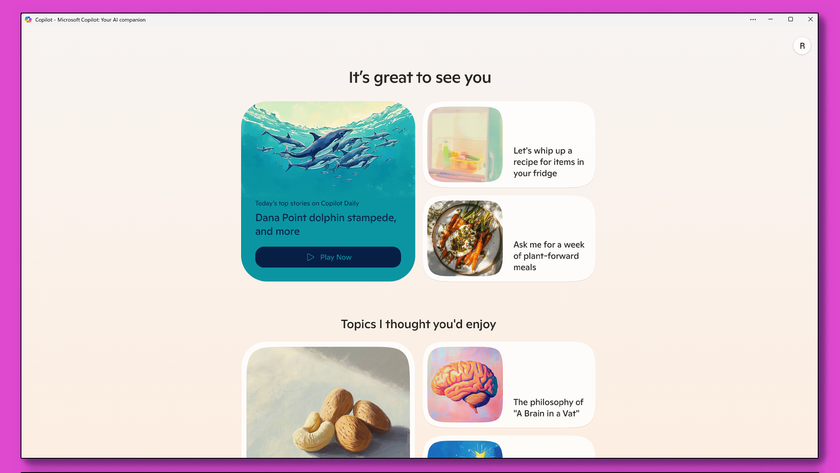
I tried Microsoft Copilot's iOS app, and here are 3 reasons why you should too

SpaceX and Apple reported spat could spell bad news for Starlink and your iPhone’s satellite communication features
